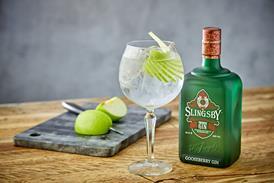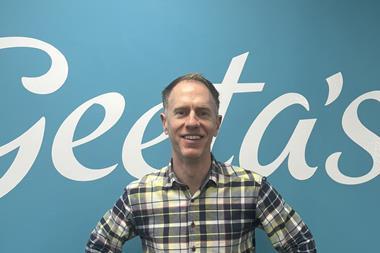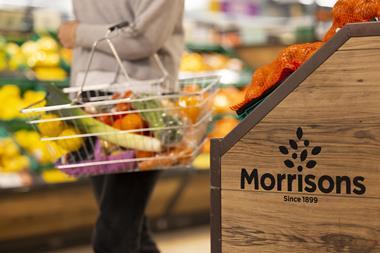Procter & Gamble's market entry a couple of years ago set off this round of escalatory deals, when the main players began competing with heavier promotions to gain share. Last August the battle entered a new phase when Kimberly-Clark reduced Andrex's price (from £1.99 to £1.69 for a 4-roll pack) and sheet size (from 280 to 241) to protect the brand which was in danger of losing out to its lower-sheet count competitors.
Since then Georgia-Pacific and P & G have done similar sheet and price-shedding exercises.Andrex marketing manager Allistair Frost says it was done to equalise the sheet/price ratio with other brands, and to defuse the rampant price discounting.
Has it had the desired effect? Frost claims Andrex share is up 5% over the calendar year to December 2001 and is stabilised at 30%. The lower sheet count has had an impact on rate of sale which Frost says has risen by an average 32% over a year ago. Whether it has reduced promotions overall is unclear because the market is settling after the changes of the last year, says Frost. "But we have reduced our promotions. Toilet tissue is a product everyone has to buy and heavy discounting doesn't make people buy more, it merely devalues the category.
"To restore value it needs promotions that make intelligent use of brand values to get consumers to buy into the quality of the product rather than its price. A good example is our Mini Bean Puppy promotion last year in which consumers had to collect tokens off full price packs. It was very successful and encouraged loyalty."
Its other restorative initiative, the introduction of an aloe vera lotion enhanced version of Andrex in August now has 2% market share, says Frost. "Adding value will be the focus of our developments this year," he says.
SCA is also making a bigger play for quality and relaunching its Double and Quilted Velvet with new packaging and a new everyday luxury positioning. Quilted Velvet also has an improved extra soft tissue quality. The relaunch is being supported by a £14m marketing budget that will include new TV advertising in March, plus extensive sampling and the return of its Velvet hot air balloon. "Premium products have the most growth potential because the trend is for consumers to trade up," says senior product manager Nick Dudman.
Georgia-Pacific and P & G have also done similar relaunches. Georgia-Pacific's recycled paper brand Nouvelle has just had a makeover with new packaging, improved paper and a reduced price of £1.69, while P & G's Charmin is moving on to the shelves this month with softer paper and the addition of Comfort to its name to provide a sharper marketing focus.
The less volatile kitchen tissue market has performed strongly, led by P & G's Bounty, though with little innovation.
P & G marketing director Mark Brickhill believes the category has massive potential. "We believe it can double in size to match the US which has twice the household consumption of the UK. But to achieve this it needs display support. The US market shows strong correlation between growth and frequency of display," says Brickhill.
The main development has been the extension of character licensing on Georgia-Pacific's Thirst Pockets brand which has added Harry Potter and Looney Tunes to its range. "Character packs are growing as they appeal to families and children but the market is divided equally between preferences for plain and patterned" says Georgia-Pacific's Duncan.
Facial tissues has done well over the year up 9% though the coming year's performance may not be so strong because there hasn't yet been a winter flu epidemic. Brand leader Kleenex for Men has seen decline due to consumers switching to regular size products and to pocket packs. Kleenex believes the undeveloped out-of-home market has the most potential and last August introduced Travelers for car use. Extensive sampling for Travelers and pocket packs is planned.
P & G's Tempo is gaining share, while Georgia-Pacific's Le Box, a facial tissue box and refill concept has seen a three-fold sales increase since its October relaunch. "We anticipate a 5% share by the end of the year," says Duncan.
{{FOCUS SPECIALS }}
Close menu
- Home
- Retail & Wholesale
-
Products & Suppliers
- Back to parent navigation item
- Products & Suppliers
-
Product Categories:
- Back to parent navigation item
- Product Categories:
- Alcoholic drinks
- Bakery
- Cereals & breakfast
- Cheese
- Chicken & poultry
- Chocolate
- Confectionery
- Crisps, nuts & snacks
- Dairy
- Fish
- Fresh produce
- Frozen
- Household
- Meat
- Own Label
- Sauces & condiments
- Seasonal
- Soft drinks
- Vaping
- Vegan & plant-based
- World foods
- Suppliers
- People
- Reports & Data
-
Topics A-Z
- Back to parent navigation item
- Topics A-Z
-
Popular topics:
- Back to parent navigation item
- Popular topics:
- Cost of living crisis
- Crime
- Deposit Return Schemes
- Finance
- Government & Regulation
- Health
- Inflation
- Loyalty
- Marketing
- Mergers & Acquisitions
- New Product Development
- Sourcing
- Supply chain
- Sustainability & environment
- Technology
- Ultra Processed Foods
- Vaping
- A-Z all topics
- Content by type:
- Events
- Ask iA (beta)
- Subscribe now
Sign in to comment on this article
Not logged in before? Register for FREE guest access today.
You will be able to:
- Read more stories
- Receive daily newsletters
- Comment on stories
Advert














No comments yet